what is alchemy?
by Moreh
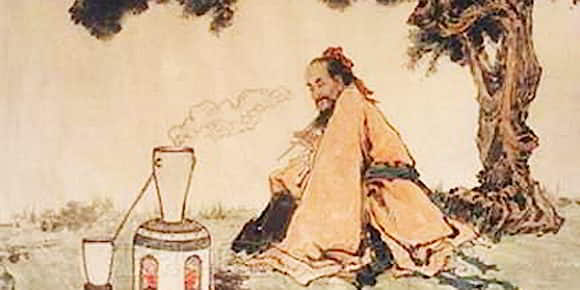
Many are the traditional stories of alchemists still alive since time immemorial due to the effects of taking
the Elixir of Life. Is this same Alchemy still practiced today?
alchemy today
Modern day dictionaries generally define Alchemy as follows:
"A form of chemistry and speculative philosophy practiced in the Middle Ages and the Renaissance and concerned principally with discovering methods for transmuting baser metals into gold and with finding a universal solvent and an elixir of life."
This covers two basic tenets that are associated with Alchemy, the possibility of transmutation and that of achieving immortality through a potion or Philosopher's Stone. Both ideas revolve around the profound powers ascribed to the early practitioners of alchemy and to those which made it such an influential philosophical tradition.
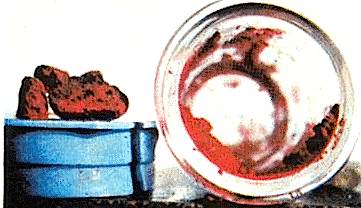
This unique picture provided by the Elder Brothers, possibly shows the Stone in its unperfected state, before the operation of multiplication. In this state, St. John calls the Stone "False Prophet" for it has all the appearances of the finished Stone, but none of its virtues.
With the flight of science and of the scientific method, Alchemy was dismissed as a pseudo-science, a farrago of symbols and parables. Alchemy was classified as something hyperphysical and segregated from the scientific mainstream, a vain chimera of science and a gold-making fraud.
However hard chemists tried, they could not reproduce the Philosopher's Stone. Others suggested Alchemy should be seen as a purely symbolic language to aid spiritual awakening. But truth progresses in spite of skepticism, and more recently an increasing amount of serious anachronistic scholars have proven many prejudices wrong. A resurgence of investigations in the practical field has led to most interesting results, and a more coherent image of the place and extent of the Art. [Hanegraaff, 2006]. These practitioners and scholars are trying to understand alchemy as best as possible in a context that is neither purely scientific nor purely spiritual but one which includes the Hermetic principles and practices and knowledge related to mysticism, mythology, astrology, magic and geometry.
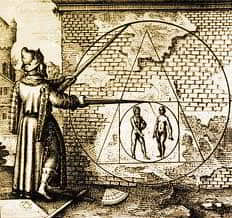
The Inner Garden Alchemy Research Group therefore prefers the following definition of Alchemy:
"Alchemy is the art, philosophy and science of the actualization of man and nature by purifying and strengthening its life force and its attunement to the Divine. Its object of study is the Quintessence, the Light, its objective is the transformation of Mind and Matter." [ref. Deed of Foundation, 2010]
This definition includes both an Internal and an external component - a holistic concept that goes back to the very first remaining sources on Alchemy, be it of Greek, Indian, Chinese or even Egyptian origin.
origins of alchemy
The Art of Alchemy possibly dates back to the dawn of time. A timeline relating the most important events can be found here. The oldest Indian writings contain the same hints of alchemy that are found in evidence from ancient China, namely references to a connection between gold and long life. Mercury, which was so vital to alchemy everywhere, is first mentioned in the 4th to 3rd century BC Artha-sastra, about the same time it is encountered in China and in the West [Multhauf & Gilbert, 2008]. The idea of transmuting base metals to gold appears in 2nd to 5th century AD Buddhist texts, about the same time as in the West. Since Alexander the Great had invaded India in 325 BC leaving a Greek state (Gandhara) that long endured, the possibility exists that the Greeks acquired the idea from the Indians or that there was an exchange of knowledge in this field.
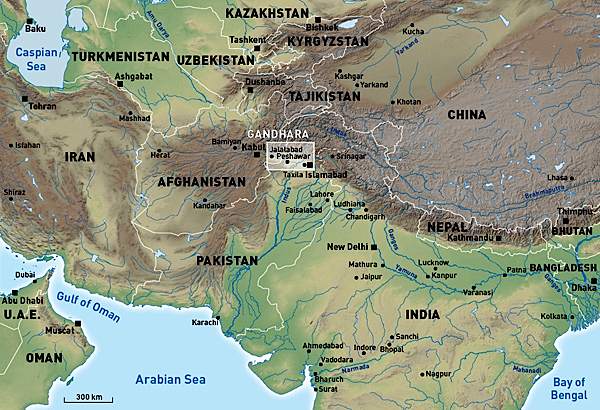
Since alchemy was engrained in the vast field of Indian erudition, there was much overlap with influences from other metaphysical and philosophical doctrines such as Samkhya, Yog, Vaisheshik and Ayurveda. At the same time in China, Alchemists practiced a similar tradition. The "Cantong qi" is the earliest known book devoted entirely to alchemy, composed by Wei Boyang in the 2nd century AD. The title can be translated as "Kinship of the Three" which may be a reference to the fact that the book deals with three forms of Alchemy:
- A form of Body Alchemy (Neidan), involving the mastery of energies in the body.
- A Philosophical and religious tradition (Taoism), involving the exploration of the Inner Worlds and cosmology.
- A form of External Alchemy, involving the concoction of the Elixir of Life and the Philosopher's Stone.
These three complementary fields of thought were all part of a single doctrine - and most likely an initiatic tradition. It is in this light that the Inner Garden Alchemy Research Group has qualified Alchemy as an:
- • Art
- • Philosophy
- • Science
Alchemy is a link in the chain of development of Man and Nature, quickening Nature's processes in pursuit of perfection. This is also called the Great Work. The main mode of operation can be summarized as 'the raising of vibrations' which applies to both the physical and the mental planes. The potential for perfection in essence is present throughout nature but this Arcanum needs to be separated from its grosser parts, and multiplied. The conversion from one body to another works in the physical as well as in the mental realm, like a vibration or an idea imprinting itself from one to another.

With regard to the various sources and shapes the Alchemical Tradition has known in various cultures, our Deed of Foundation defines the tradition as such:
"A practical and esoteric tradition that is often identified as Hermeticism in the West, and which has been practiced by brotherhoods such as the Freres Aines de la Rose+Croix, Gold und Rosenkreuz and Golden Dawn. Globally the tradition goes back to teachings of among others the Sarmounis and of Sufism, the Siddha Tradition, Pythagoreanism, Kabbalism." [ref. Deed of Foundation, 2010].
The cross fertilisation among cultures can be underlined for example by the report of an 11th century Persian chemist and physician named Abu Rayhan Birun, who reported about the Indians that, "They have a science similar to alchemy which is quite peculiar to them. They call it Rasayana, a word composed with rasa, i.e. gold. It means an art which is restricted to certain operations, drugs, and compound medicines, most of which are taken from plants. Its principles restore the health of those who were ill beyond hope, and give back youth to fading old age..."
When intellectual darkness settled towards the beginning of our current era and through the subsequent rule and censorship of the church, Arabia became the custodian of the Lamp of hidden Wisdom. Particularly for the western tradition, Arabian manuscripts provide a number of most of the 'original' sources and the Inner Garden Foundation gratefully draws upon that heritage as was passed on through a group of hermetic brotherhoods.
In the definition above, the brotherhoods of the Freres Aines de la Rose+Croix and Gold und Rosenkreuz are mentioned as two most recent groups that have passed on this initiatic tradition. But even in these traditions, often times older sources serve as reference works for an Art that may have once been at a much higher level of development than we currently realize. The idea that we rapidly evolve towards greater knowledge may hold for the last few decades; however, during the last millennia there may rather have been a slow and steady decline of knowledge, reaching its nadir in the dark ages.
has alchemy caught your interest?
Something may have caught your curiosity or has been awakened in you; an interest for cosmology or perhaps a love for nature, a longing for wisdom or the promise of evolution and vitality that is inherent in nature.
Many have ventured upon the path of Alchemy and spent a lifetime in search of the Philosopher's Stone. Unfortunately, even so many have spent their family capital in the process, poisoned their lungs with metal vapours, become estranged from friends and family, and drove themselves to the edge of insanity in the maze of alchemical and archetypal symbols that became their fabric of reality. Cycliani relates:
"Heaven having granted me success in making the Philosopher's Stone, after having spent 37 years in seeking it, stayed awake at least 1500 nights without sleep, suffering innumerable miseries and irreparable losses. I have decided to offer to youth, the hope of the future, the heart-rending picture of my life. This may serve both as a lesson and at the same time help the young to turn away from an art that at first may offer the most delightful white and red roses that, however, are surrounded by thorns and of which the path that leads to the place where one can pick them is full of pitfalls." [Cycliani, Hermes Unveiled. 1831]
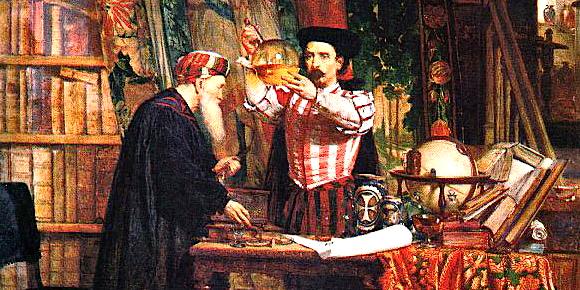
To avoid part of the hardships and waste of time and resources that Cycliani relates, students of the Art often try to cooperate more closely with one another nowadays mainly through forums on the internet. Sharing knowledge is a form of symbiosis, where students can learn from each otherand thus do not have to reinvent the wheel at every step of the way. The whole is bigger than the sum of its parts. However, the forums on the internet count few meaningful and in-depth discussions either because advanced alchemists are reluctant to post about intimate alchemical secrets on a public forum or simply because there is no incentive to post any intermediate results when there is only superficial feedback or no feedback at all from other forum members. The Inner Garden Foundation was created as a private research group where knowledge is shared within the confines of a hermetic group, with its own private forum, in a way similar to the inner circle within hermetic brotherhoods of old.
